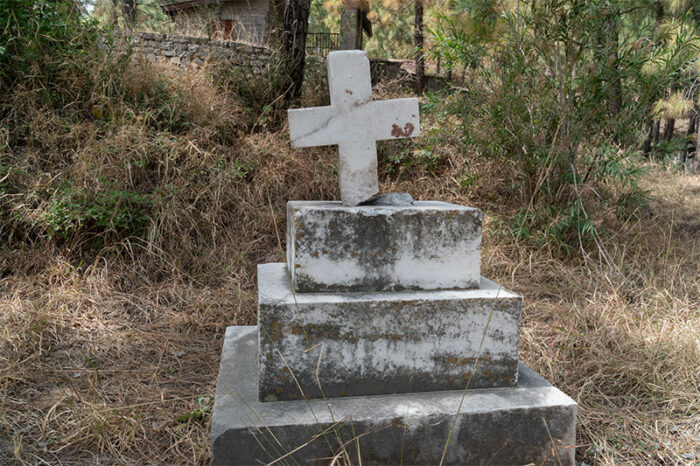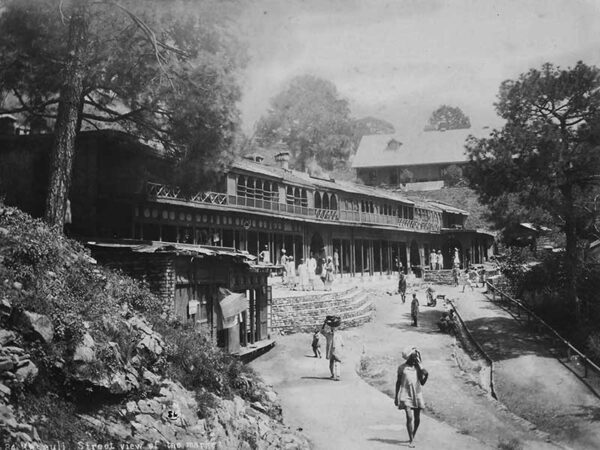British Connection
Visiting the Dead
IN
KASAULI’S
cemeteries

“We must wander witheringly
In other lands to die;
And where our fathers’ ashes be,
Our own may never lie”
— Inscribed on a headstone in a Kasauli cemetery
Visiting The Dead In Kasauli’s Cemeteries | Video
There is something intriguing about the dead buried beneath the grounds of a cemetery. May be it’s because they are witness to a past gone by and help us remember it or perhaps it’s the spookiness that surrounds them. Or the fact that how some of us love that fear of the unknown and go to places where dead still live, albeit in their graves.
In Kasauli, there are two cemeteries, which are as old as this little town itself. A third British-era cemetery is in Sanawar. The two Kasauli cemeteries are situated on the Kasauli-Dharampur and Kasauli-Parwanoo road and lie within a 1-kilometer radius of the main town.
Located in the forests where the sunlight is never enough and shines through tall pine trees, there are hundreds of graves in these cemeteries, some of them more than 200 years old.
Though rarely but you do find sometimes someone sitting here among the graves in the peace and quiet of the forests and may be wondering about the days when the dead were alive and walked the very grounds beneath which their homes are now.
First Kasauli Cemetery: The Home of the World War soldiers
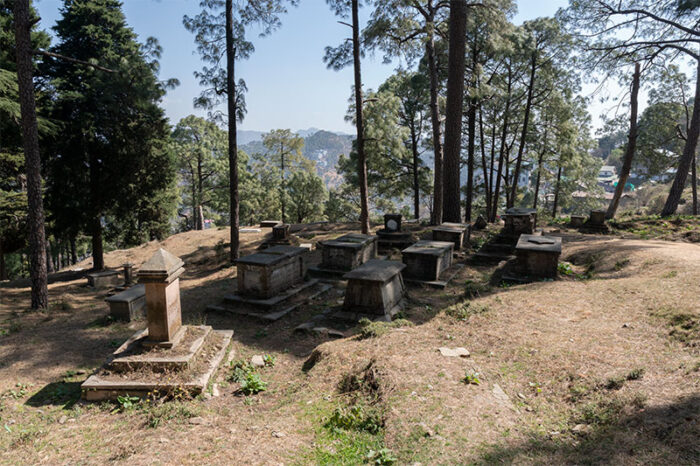
This cemetery is on the Dharampur road and at a distance of less than 1 km from the main town. The oldest graves here date back to the mid-Nineteenth century. Most graves are of Europeans who lived and died in Kasauli in the earlier British days. There are some family graves here with names inscribed on headstones.
But the grave with a house-shaped headstone makes you pause. You wonder how nice it would be if there was life after death. A house we could build, like this one, and live in it forever in afterlife.
Also buried in the cemetery are 29 soldiers of the British army, who had died in the first World War.
The graves of these soldiers were recently restored by the Commonwealth War Graves Commission (CWGC). Due to lack of proper care and maintenance, these graves had almost been lying in ruins and were timely restored.
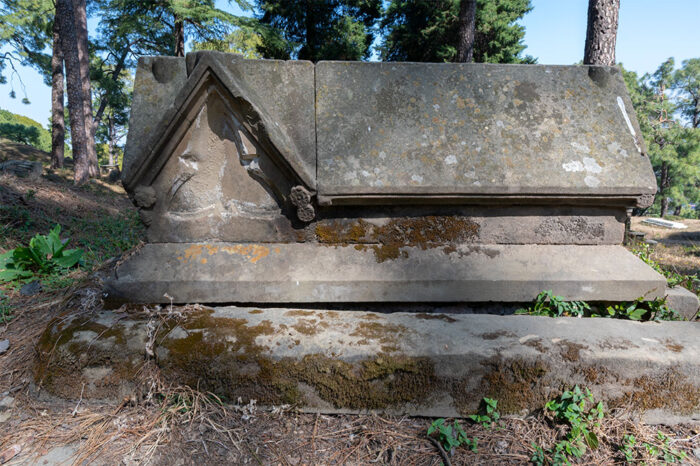
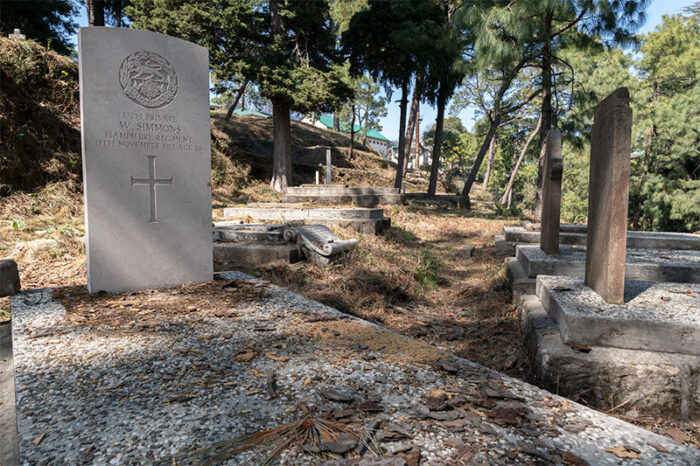
However, many others are not as fortunate. A number of graves in these cemeteries have either been completely destroyed by natural elements like rains and landslides or are lying in a dilapidated condition. Many graves have no headstones or markers. Epitaphs are either missing or lying broken and in a condition that makes the inscribed letters difficult to read.
Over the years, these cemeteries have also seen thefts of iron Crosses and marble headstones and slabs.
“The dead here need care,” says Devi Lal, the lone caretaker of the cemetery who is better known as Kabristan ka Chowkidar in Kasauli.
“If these are not restored, soon enough we won’t even know whose graves these are, says Devi Lal, who is the third-generation caretaker of the cemetery in his family. According to Devi Lal, his grandfather and father did the same job. However, he does not get paid for it.
“I still try to take care of the cemetery the way my father and grandfather did. But I cannot restore the graves or stop the thefts alone. The government must step in to save this cemetery, which we should not forget is also an important historical site,” says Devi Lal.
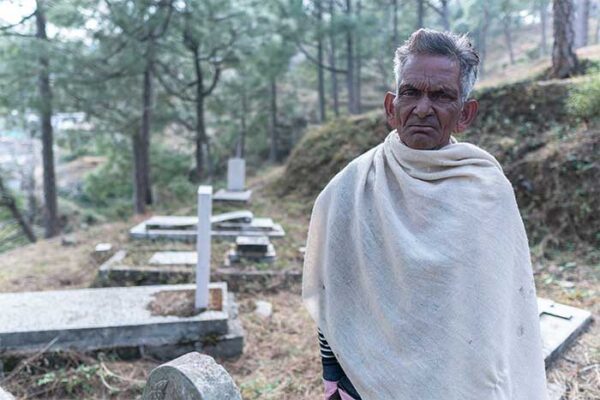
Second Kasauli Cemetery
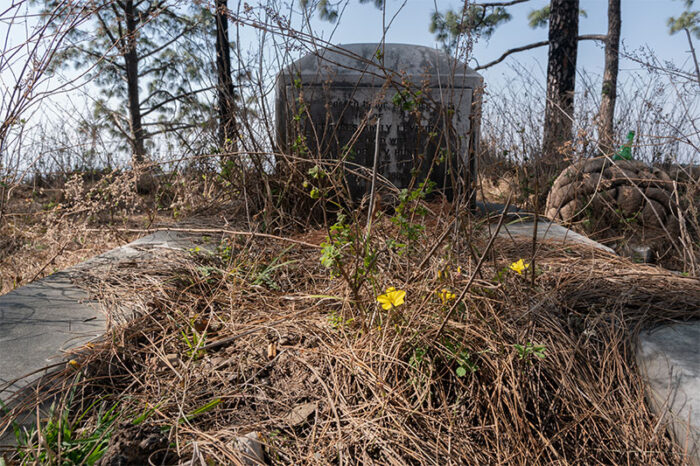
The second cemetery in Kasauli lies on the Kasauli-Parwanoo road. There is a small path, hardly noticeable, that starts from near the old Central Research Institute (CRI) office building and leads to the cemetery and further down to a village. This cemetery is spread over a large forest area and has hundreds of graves, most dating back to the mid-Nineteenth century.
In the absence of any proper care, grass and wild shrubs have overgrown into the headstone and slabs.
Sanawar Cemetery
The third British-era cemetery is in the nearby Sanawar hills. This cemetery also dates back to the mid-Nineteenth century and is maintained by the Lawrence school, Sanawar.
Most of the graves are of Britishers, who had worked at the Lawrence school or Lawrence military asylum as it used to be called. It remains locked and to visit you need prior permission from the Headmaster of the Lawrence school.
